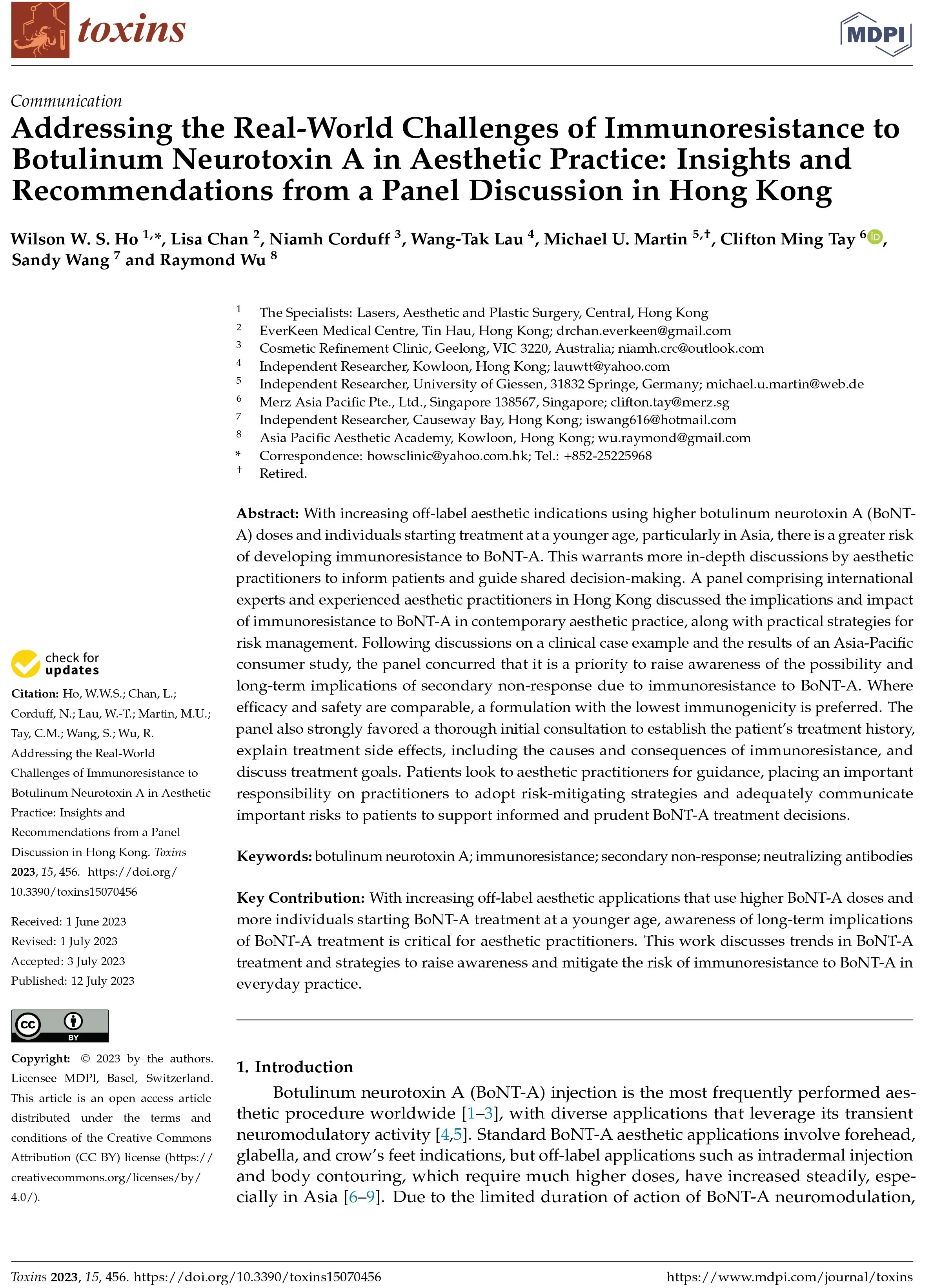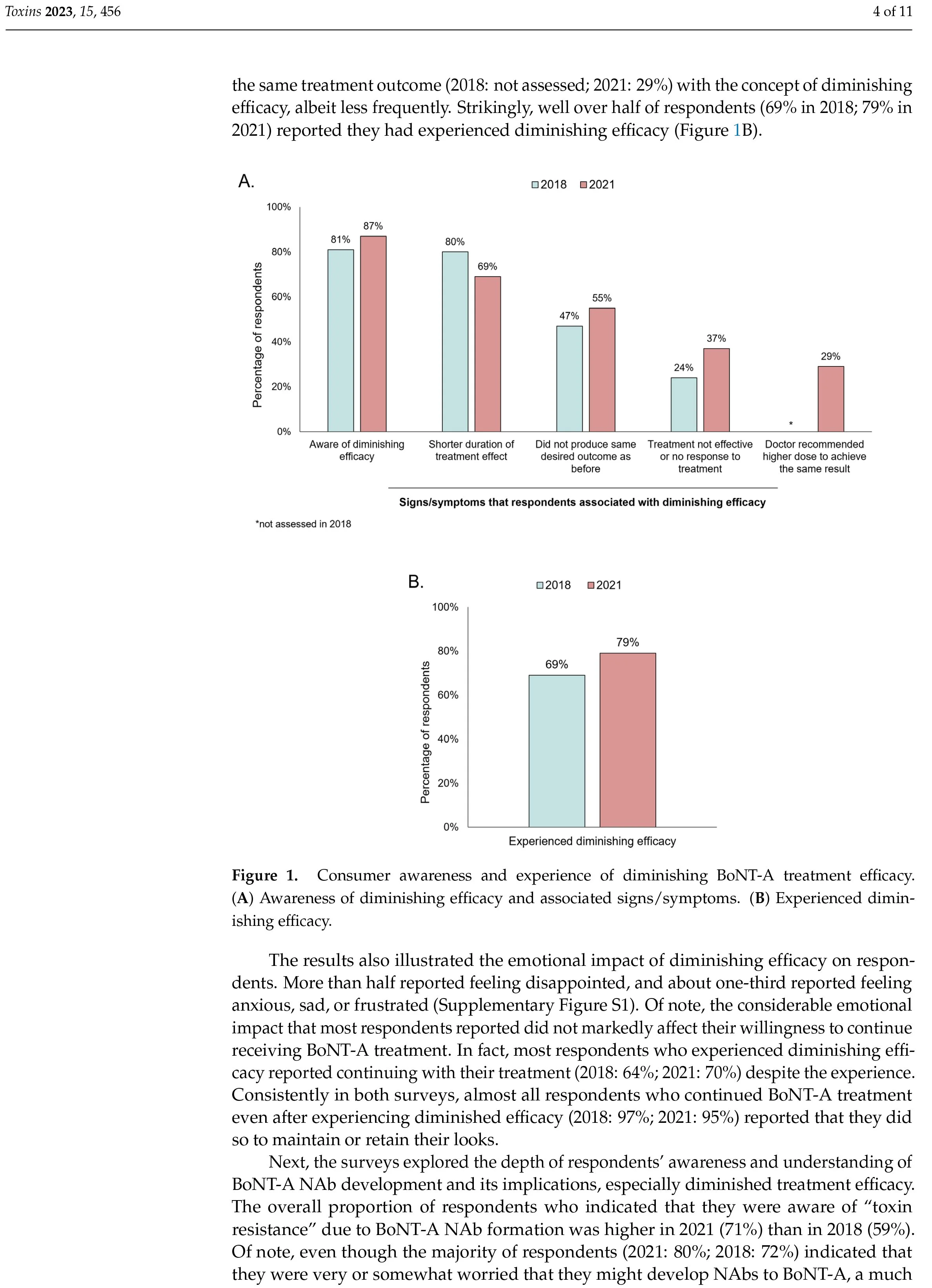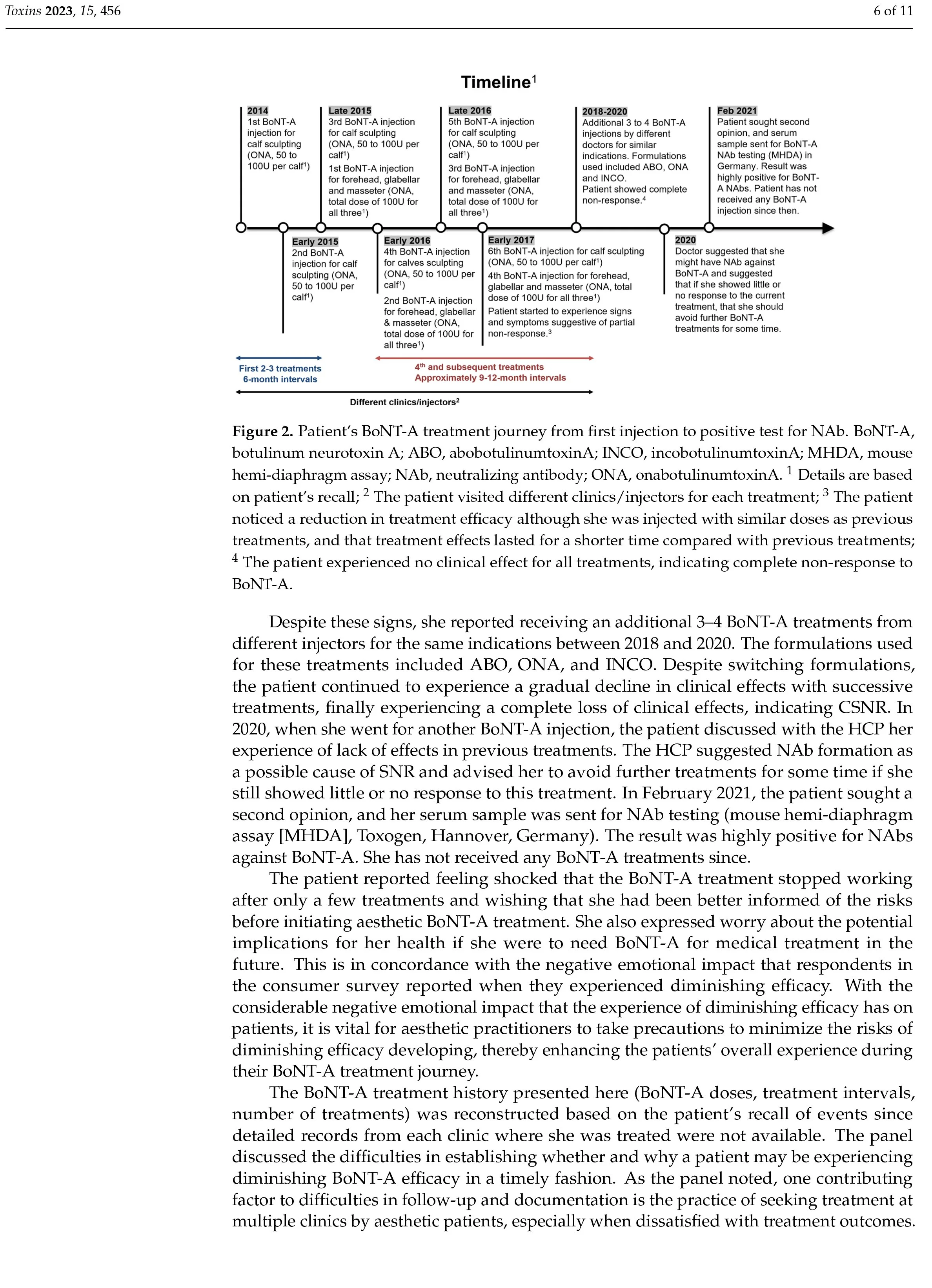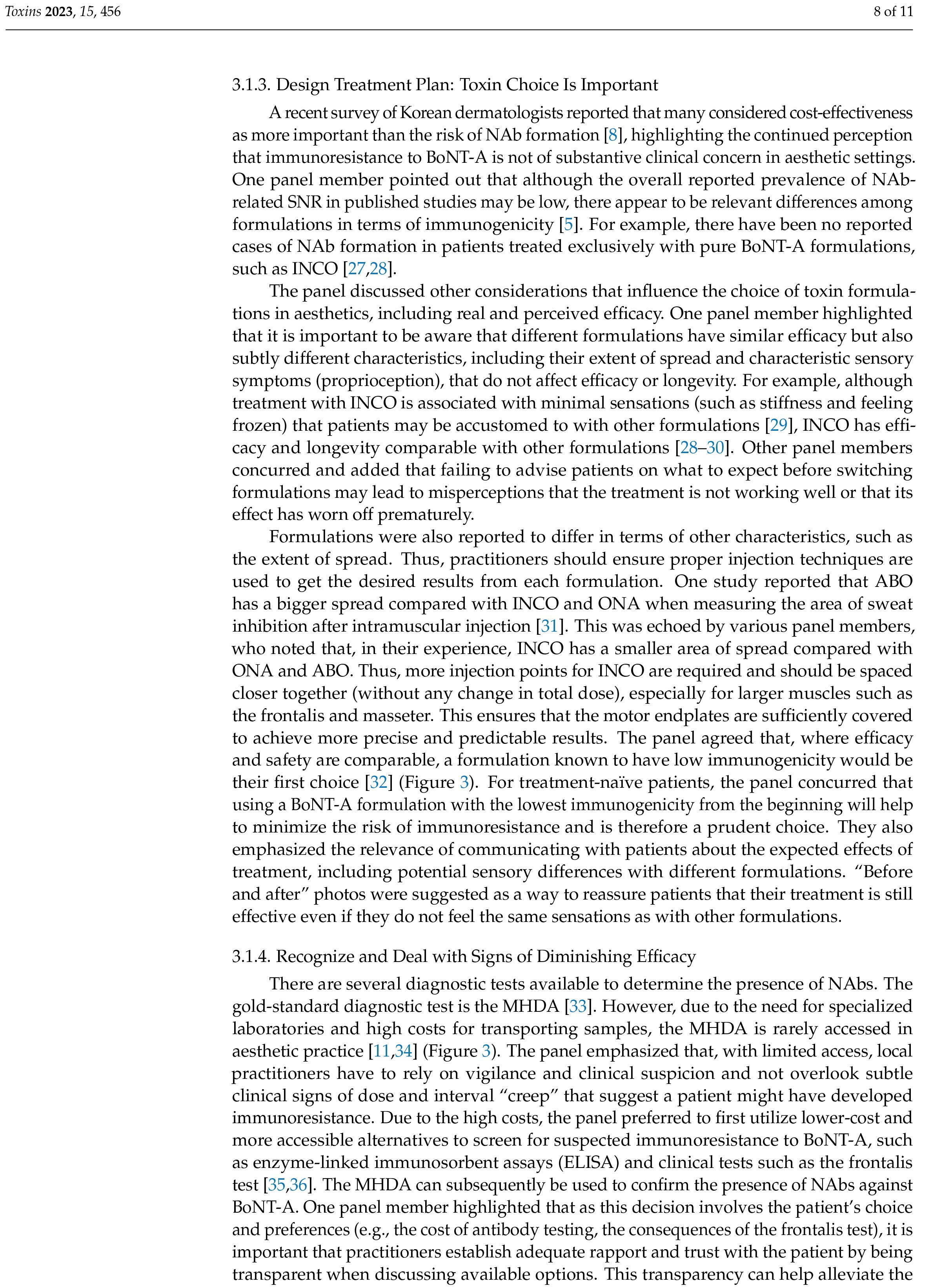The MDPI Journal - Addressing the Real-World Challenges of Immunoresistance to Botulinum Neurotoxin A in Aesthetic Practice: Insights and Recommendations from a Panel Discussion in Hong Kong
Abstract
With increasing off-label aesthetic indications using higher botulinum neurotoxin A (BoNT-A) doses and individuals starting treatment at a younger age, particularly in Asia, there is a greater risk of developing immunoresistance to BoNT-A. This warrants more in-depth discussions by aesthetic practitioners to inform patients and guide shared decision-making. A panel comprising international experts and experienced aesthetic practitioners in Hong Kong discussed the implications and impact of immunoresistance to BoNT-A in contemporary aesthetic practice, along with practical strategies for risk management. Following discussions on a clinical case example and the results of an Asia-Pacific consumer study, the panel concurred that it is a priority to raise awareness of the possibility and long-term implications of secondary non-response due to immunoresistance to BoNT-A. Where efficacy and safety are comparable, a formulation with the lowest immunogenicity is preferred. The panel also strongly favored a thorough initial consultation to establish the patient’s treatment history, explain treatment side effects, including the causes and consequences of immunoresistance, and discuss treatment goals. Patients look to aesthetic practitioners for guidance, placing an important responsibility on practitioners to adopt risk-mitigating strategies and adequately communicate important risks to patients to support informed and prudent BoNT-A treatment decisions.
Keywords:
botulinum neurotoxin A; immunoresistance; secondary non-response; neutralizing antibodies
Key Contribution: With increasing off-label aesthetic applications that use higher BoNT-A doses and more individuals starting BoNT-A treatment at a younger age, awareness of long-term implications of BoNT-A treatment is critical for aesthetic practitioners. This work discusses trends in BoNT-A treatment and strategies to raise awareness and mitigate the risk of immunoresistance to BoNT-A in everyday practice.











